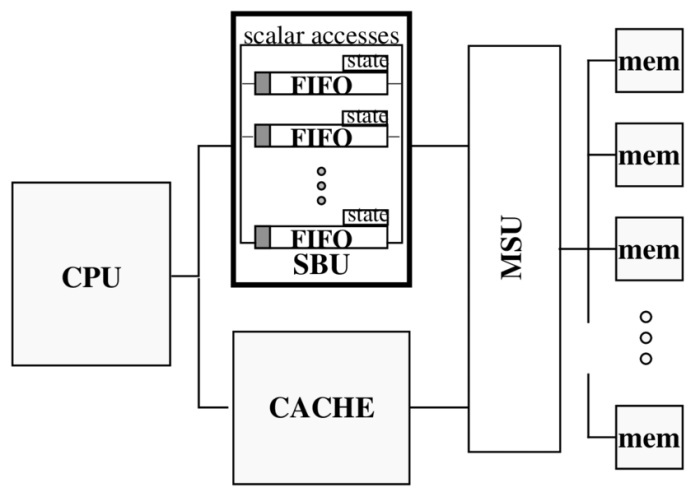In a uniprocessor system multiprogramming increases processor efficiency by – In a uniprocessor system, multiprogramming is a technique that allows for the concurrent execution of multiple programs. This can significantly increase processor efficiency by reducing idle time and improving resource utilization. Multiprogramming achieves this by allowing multiple programs to share the processor’s time, with the operating system scheduling the execution of each program in a way that maximizes overall system performance.
Multiprogramming is particularly beneficial in systems where there are multiple tasks that can be performed concurrently, such as input/output operations, memory management, and user-level processing. By allowing these tasks to be executed simultaneously, multiprogramming can reduce the amount of time that the processor is idle, leading to increased efficiency.
Concept of Multiprogramming
Multiprogramming is a technique used in uniprocessor systems to increase processor efficiency by executing multiple programs concurrently. It involves dividing the available processor time among multiple programs, allowing them to share the processor and memory resources.
In a uniprocessor system, the processor can only execute one program at a time. However, with multiprogramming, the processor can switch between programs rapidly, giving the illusion that multiple programs are running simultaneously.
Processor Efficiency in Uniprocessor Systems

Processor efficiency is affected by several factors in uniprocessor systems, including:
- Processor speed:The speed of the processor determines how many instructions it can execute per second.
- Memory access time:The time it takes to access data from memory can impact processor efficiency.
- I/O operations:Input/output (I/O) operations can block the processor while waiting for data to be transferred.
Multiprogramming can mitigate these factors by allowing multiple programs to share the processor and memory resources. This reduces the amount of time the processor spends waiting for I/O operations or accessing memory, thereby improving overall efficiency.
Scheduling and Context Switching
Scheduling algorithms are used in multiprogramming systems to determine which program gets to use the processor at any given time. Common scheduling algorithms include:
- First-come first-served (FCFS):Programs are executed in the order they arrive.
- Shortest job first (SJF):Programs with the shortest estimated run time are executed first.
- Priority scheduling:Programs with higher priority are executed first.
Context switching is the process of saving the state of the currently running program and loading the state of the next program to be executed. Context switching can affect processor efficiency, as it takes time to perform. Multiprogramming systems use techniques such as preemptive scheduling to minimize the impact of context switching.
Memory Management and Swapping: In A Uniprocessor System Multiprogramming Increases Processor Efficiency By

Memory management is crucial in multiprogramming systems to ensure that multiple programs can share the available memory resources. Techniques such as virtual memory and paging are used to create the illusion of a larger memory space than is physically available.
Swapping is a technique used in multiprogramming systems to move inactive programs from memory to disk and back to memory when needed. Swapping helps to improve processor efficiency by freeing up memory for active programs.
Input/Output Handling

Multiprogramming systems handle I/O operations using techniques such as buffering and spooling. Buffering involves storing data in memory before it is transferred to or from a device, while spooling involves queuing I/O requests to be processed later.
These techniques help to minimize I/O overhead and improve processor utilization by allowing the processor to continue executing other programs while I/O operations are being performed.
Benefits and Limitations of Multiprogramming
Benefits of multiprogramming include:
- Improved processor efficiency
- Increased system throughput
- Reduced waiting time for users
Limitations of multiprogramming include:
- Increased memory overhead
- Potential for increased context switching
- Less effective for programs with large memory requirements or frequent I/O operations
Comparison with Multiprocessing
Multiprocessing is another technique used to improve processor efficiency, but it involves using multiple processors in a single system. Multiprocessing can provide higher performance than multiprogramming, as multiple programs can be executed simultaneously on different processors.
However, multiprocessing systems are more complex and expensive than uniprocessor systems. Multiprogramming is often a more cost-effective option for improving processor efficiency in uniprocessor systems.
Expert Answers
What are the benefits of multiprogramming?
Multiprogramming offers several benefits, including increased processor efficiency, reduced idle time, improved resource utilization, and increased system performance.
What are the challenges of multiprogramming?
Multiprogramming can introduce challenges such as increased context switching overhead, memory management complexity, and the need for efficient scheduling algorithms.
How does multiprogramming differ from multiprocessing?
Multiprogramming allows multiple programs to share a single processor, while multiprocessing utilizes multiple processors to execute programs concurrently.